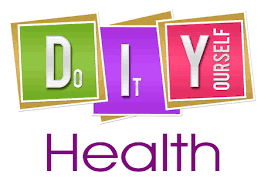DIY Health Maintenance
Recently, I went on a much-needed vacation to Sedona. The purpose of the vacation was to relax and rejuvenate after a very long period of high stress.
After a few days of rest, I found myself rock climbing. That wasn’t exactly what I had planned for relaxation, however, it did meet the goal of learning more about health and healing. My husband and I are by no stretch avid hikers, let alone rock climbers!
We started off at about 9 A.M. and left with our new hiking sandals, some essential oil sunscreen, and two bottles of water each. Did I mention we aren’t very skilled at hiking? So now I get to add to the list that we’re also not very skilled or knowledgeable at planning on what to take on a hike that ended up leading to rock climbing into the hottest part of the afternoon.
Now, these rocks may not have been serious on-the-edge climbing rocks, but there was one moment that I captured in a photo where it felt like I was on American Ninja Warrior. You know the obstacle where both arms and both legs are straddling a vast crevice in the Earth and you hope not to fall in it? Okay, so that’s at least what it felt like. Looking back at the picture it was merely a game of crab soccer coming back down that hill.
As I climbed up the rocks, I recall a feeling of concern that going up was one thing, but coming back down was going to be another thing. But the good news is I persevered up and I made it, although at this point it was hard to even recognize the triumphant feat of making it to the level that I had. While the scenery was amazing, I realized that at 2 o’clock in the afternoon having hiked two trails before this, our supplies were running low and my less than trained climbing muscles were questioning what I was doing up there. Oh yes, did I mention it was monsoon season in Sedona, so very large storm clouds were brewing over us at this moment? My mind began to play out the scenario of what if it starts to rain and I’m stuck up here and can’t get down these rocks which will then be slippery?
As I pondered the dilemma, I remembered, “Oh yes. I teach people every day how to revive their body in just a few minutes. Maybe…I should try that stuff?” It was at this moment that my husband proceeded to videotape me performing my BodyTalk Access routine on myself. To learn more about this routine watch this video. It was fascinating to see how balancing my brain communication and balancing my body parts to each other suddenly made my whole outlook on my situation far less daunting. The stress my body felt from the climb was now dissipating as I engaged my innate healing ability and re-programmed my cells to better utilize the water I had given them and how to better manage the water I had left. Your innate healing is that wisdom that helps you heal after surgery or when you cut your finger and the blood needs to clot.
I was also able to reset my body’s stress threshold. Let me explain, I was still on top of Red Rock watching a storm move in quickly, but through a technique called Switching, I was able to optimize my body’s fight or flight protection mechanism. So in less than ten minutes with no equipment what so ever, my body got a tune up. I scaled back down the hot rocks with much greater ease than the climb up, not just because of gravity, but because my body parts were all communicating and a synergistic relationship was re-established.
This is what stress does to the body. It tears down communication and the body parts stop remembering how to work let alone work together for the best outcome. That is when dis-ease creeps in.
Try this simple technique called Cortices featured in the BodyTalk Access class being taught on September 23, 2017, in the Dallas, Texas area. Before you watch the video by BodyTalk founder John Veltheim, take 30 seconds to close your eyes and breathe deeply. During this time ask yourself what you are noticing. Is there stress? Tension in your head or shoulders? A pain somewhere else in the body? Do you feel anxious or fearful? Now write these down and rate your experience on a scale of 1-10. Ten meaning you need a trip to the emergency room. Next, watch the explanation of The Cortices Technique and perform it on yourself. Re-rate your symptoms prior to the exercise after you perform it on yourself. I will be highly surprised if most or not all of your symptoms are greatly reduced.
If you add that technique, along with a stress threshold technique, hydration, body chemistry and full body realigning techniques, imagine the difference to your day to day aches and pains. The course also includes a Fast Aid technique. Fortunately we did not need that one on our climb, however, I already have some amazing testimonials for Fast Aid. And the best part, you don’t need any equipment or supplements to bring this improvement to your body instantly. Learn more about what the BodyTalk Access course has to offer you and be sure to reserve your spot today. Feel free to enjoy my other videos at my YouTube Channel.
